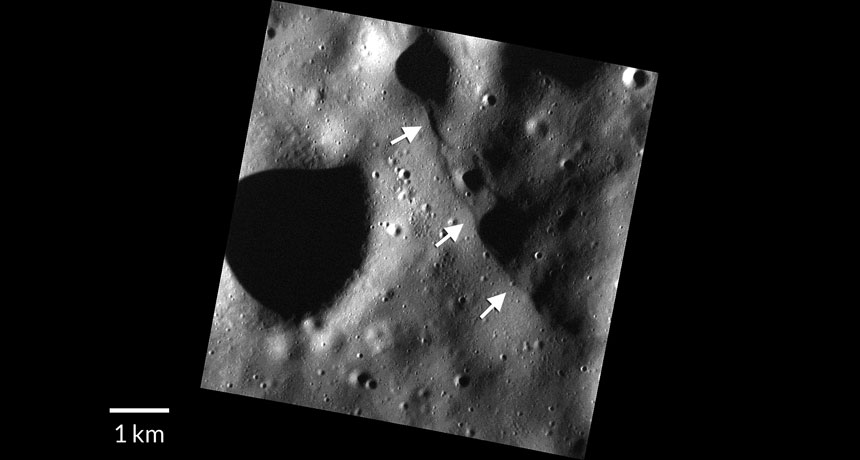Mercury’s surface still changing
MESSENGER’s snapshot of cliffs hints at tectonic activity within last 50 million years

RISE UP A line of small scarps (arrows) on Mercury, seen in this image from the MESSENGER spacecraft, suggest that the planet has been tectonically active in the last 50 million years.
NASA, JHUAPL, Carnegie Institution of Washington







